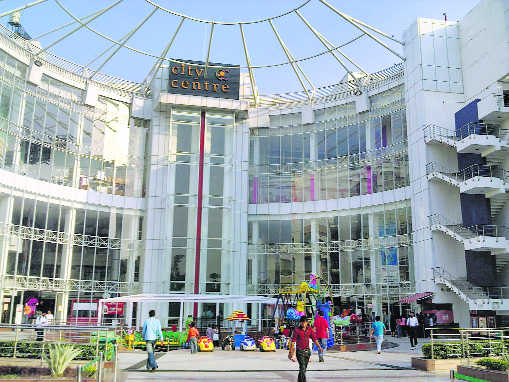
Pankaj Renjhen
The residential market be getting a lukewarm response in Delhi-NCR, but it is surely on a strong footing as far as the retail and mall space is concerned. The footfalls are healthy and the business is good making malls profitable prime spaces on the realty scene.
The city has different sizes of malls suiting the needs of different catchment bases. Many areas in the secondary submarkets have transitioned to adopt new-format retail destinations in the past three to four years, while the change in the Prime City submarket took a longer duration, as it was the point of inception. Delhi also has better potential in terms of having well-performing large-sized malls. Meanwhile, a wider participation by retailers added to the variety of tenant categories in the mall.
The success rate of these malls varies, usually depending on factors like design and layout, the mall’s brand positioning, location and how well they cater to the needs of their target segments. Also, whether or not these have been able to evolve into family destinations rather than just remaining shopping centres plays a big role.
Some of the most successful shopping malls in NCR like Select City Walk in Saket, Ambience Mall on NH-8 and Vasant Kunj, the DLF malls in Saket and Vasant Kunj, Pacific Mall in West Delhi and MGF Metropolitan Mall on MG Road, Gurgaon, employ professional tenant management teams, which decide on the brands to be leased spaces to in these malls.
These teams also evaluate placement of different brand retail stores, revenue targets to decide continuation of lease agreements, branding, and promotions and customer outreach events in the atrium. They are also involved in design and layout, which starts right from the ease of entry to open spaces and parking within the premises, entertainment avenues, flow of the floors to circulate traffic correctly, clustering similar brands on a floor, placement of food zones and exits and, most importantly, the overall ambience.
Growth drivers
Location is an important differentiating variable between most of the successful malls in NCR and their less spectacularly performing counterparts. For example, if a mall is situated in or near a high-street retail location, it tends to perform poorly. By the same coin, malls operating in locations far away from high-street retail perform much better. Good examples of this would be the Ambience and DLF malls in Vasant Kunj and MGF Metropolitan on MG Road, Gurgaon.
Accessibility to a mall’s location is among the critical aspects contributing to the success of a mall (though the location and its accessibility are definitely the only important factors). Apart from a vibrant high-street culture in an area, other reasons behind the failure of a mall could be the lack of a proper design and layout and strata-selling spaces within the mall. Generally, the leasehold model help malls register better profits, as opposed to the ownership model. Location also becomes important in terms of the population profile in a mall’s neighbourhood. The residential profile in an area has to consist of middle-income to the aspirational segment of buyers.
Market dynamics
Malls are graded according to their average vacancy levels and rentals. The rentals are in indirect proportion to the vacancy levels. So, while rentals are high in malls with vacancy levels of 10 per cent or less and low in those with 20-30 per cent vacancy levels, they are poor in malls with average vacancy levels of 30 per cent or more.
Leading malls enjoy the privilege of deciding on which brands to house, and continuously monitor all stores in case they follow a revenue-sharing model. These also see a churn, with non-performing brands being weeded out within fairly short periods of time and others being forced to shift floors or move elsewhere within the premises so that better-performing brands can be accommodated. Global and leading Indian brands either prefer to lease spaces in premium malls or go in for high-street retail locations. They are even willing to wait for vacancy in premium malls.
Future supply
Any upcoming commercial and/or residential area in NCR will work best for any future mall supply in the region. For example, Noida and Greater Noida are areas that have no malls as yet, but are upcoming commercial and residential areas. Golf Course Extension road in Gurgaon, Dwarka Expressway and New Gurgaon sector (beyond the second toll plaza on the NH-8) are some of the other locations which will work best for any future malls in NCR.
The evolving preferences, higher disposable incomes and exposure to more foreign travel has caused the region’s growing middle class to aspire for a wholesome shopping experience.
Locations Gross rent pm/sq ft
Overall 131
Prime South 247
Prime Others 115
Suburban 112



























